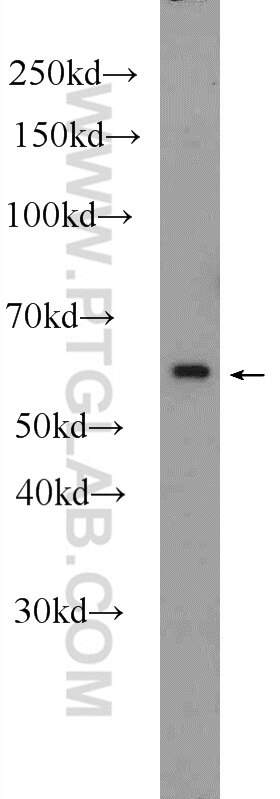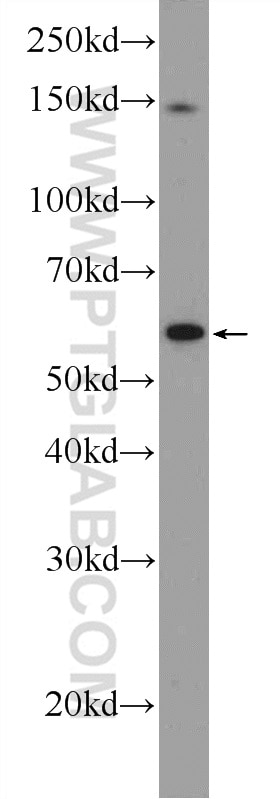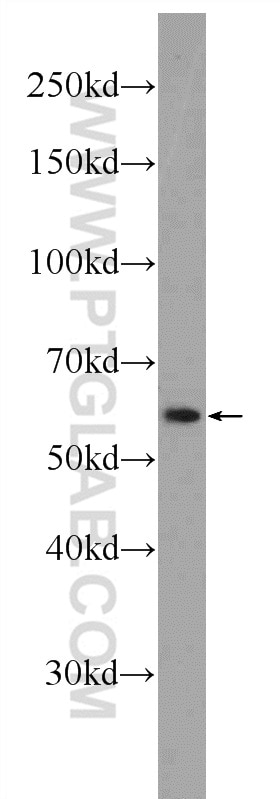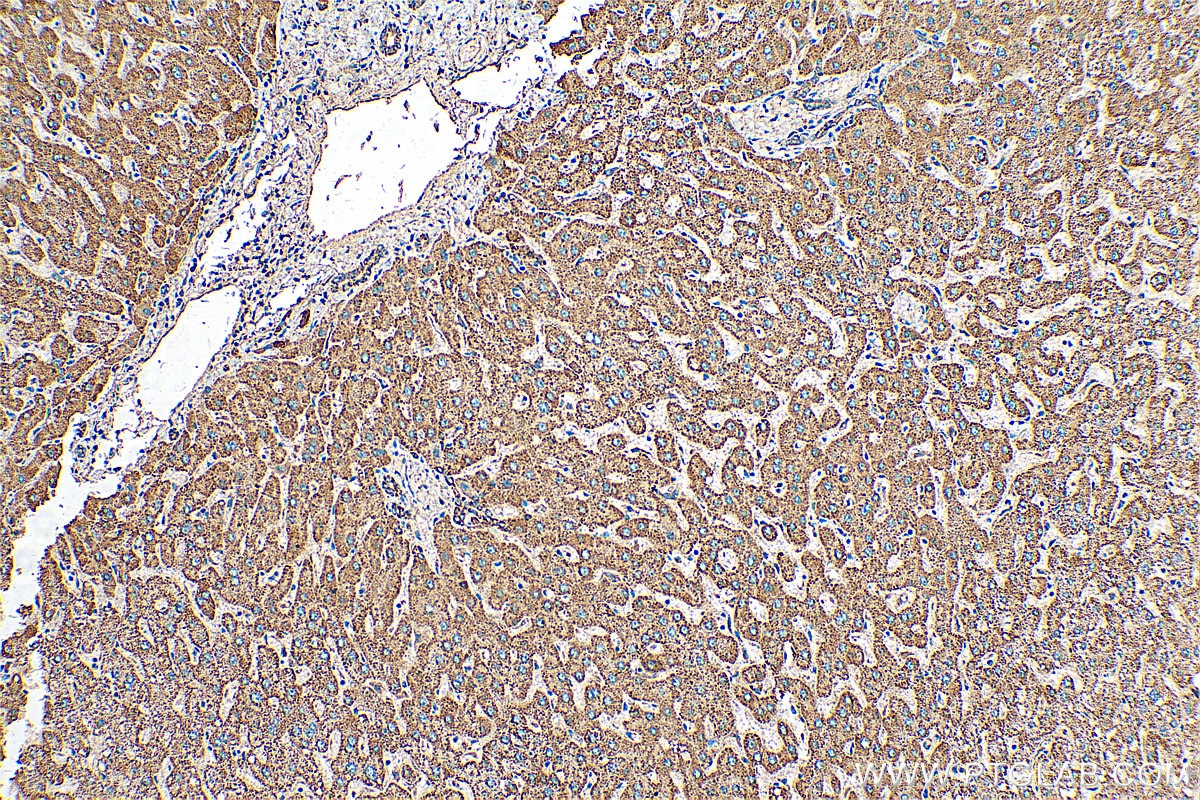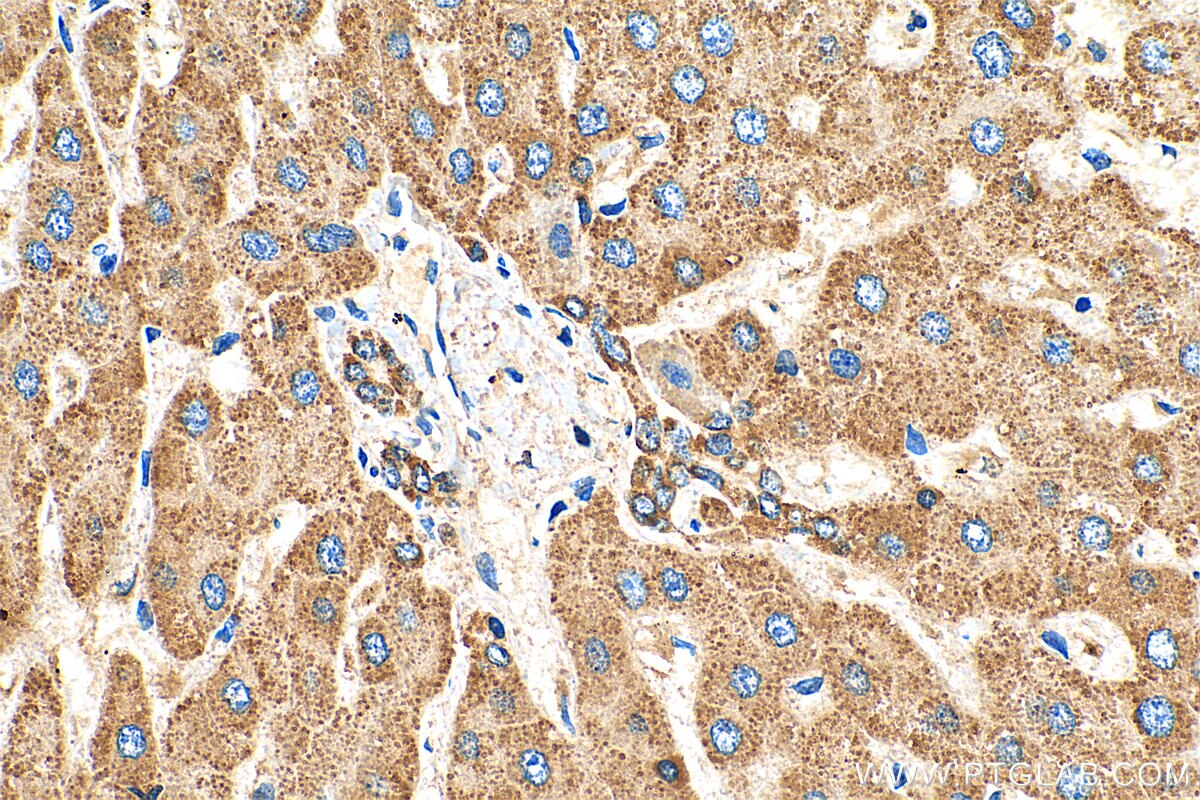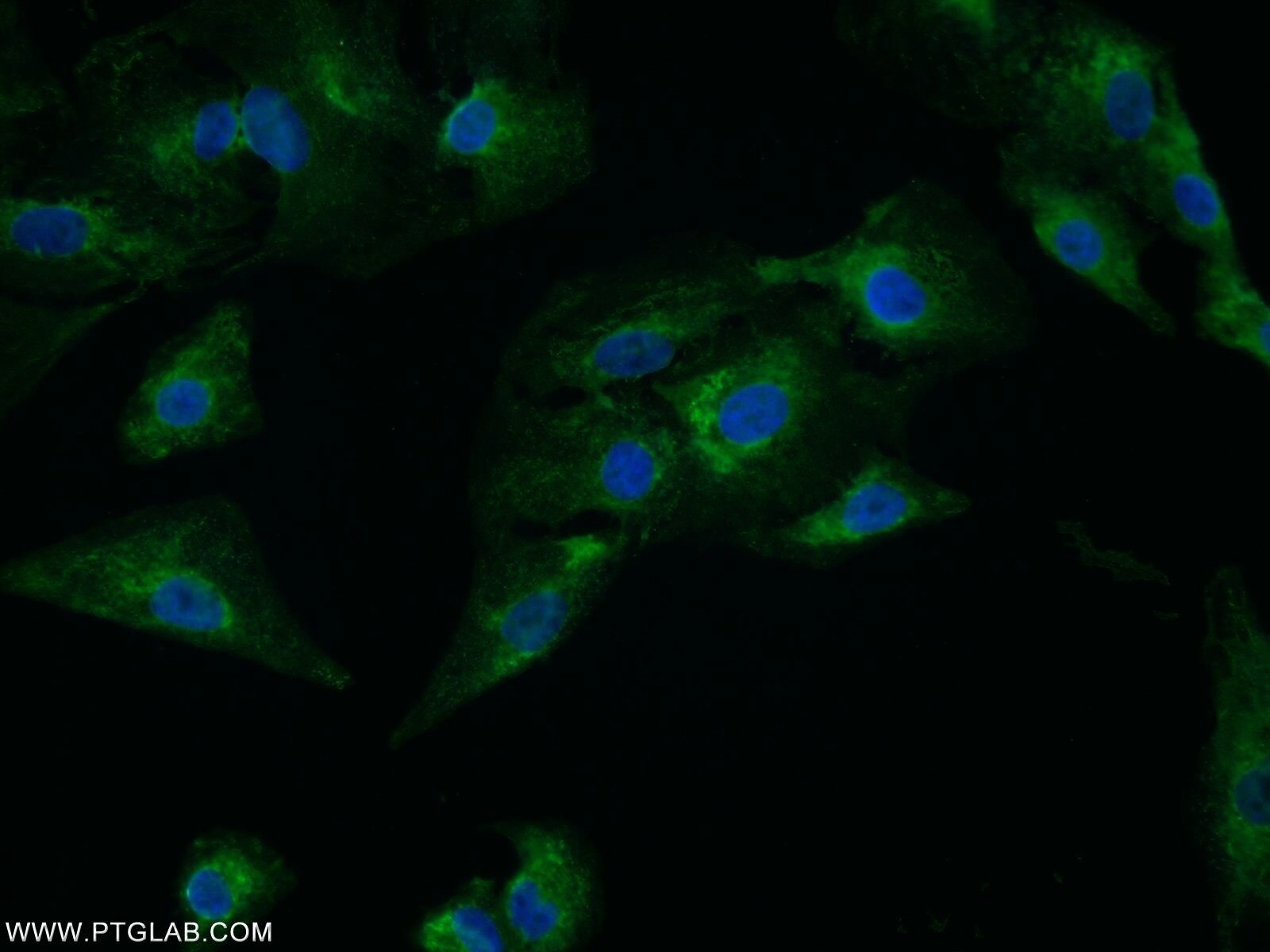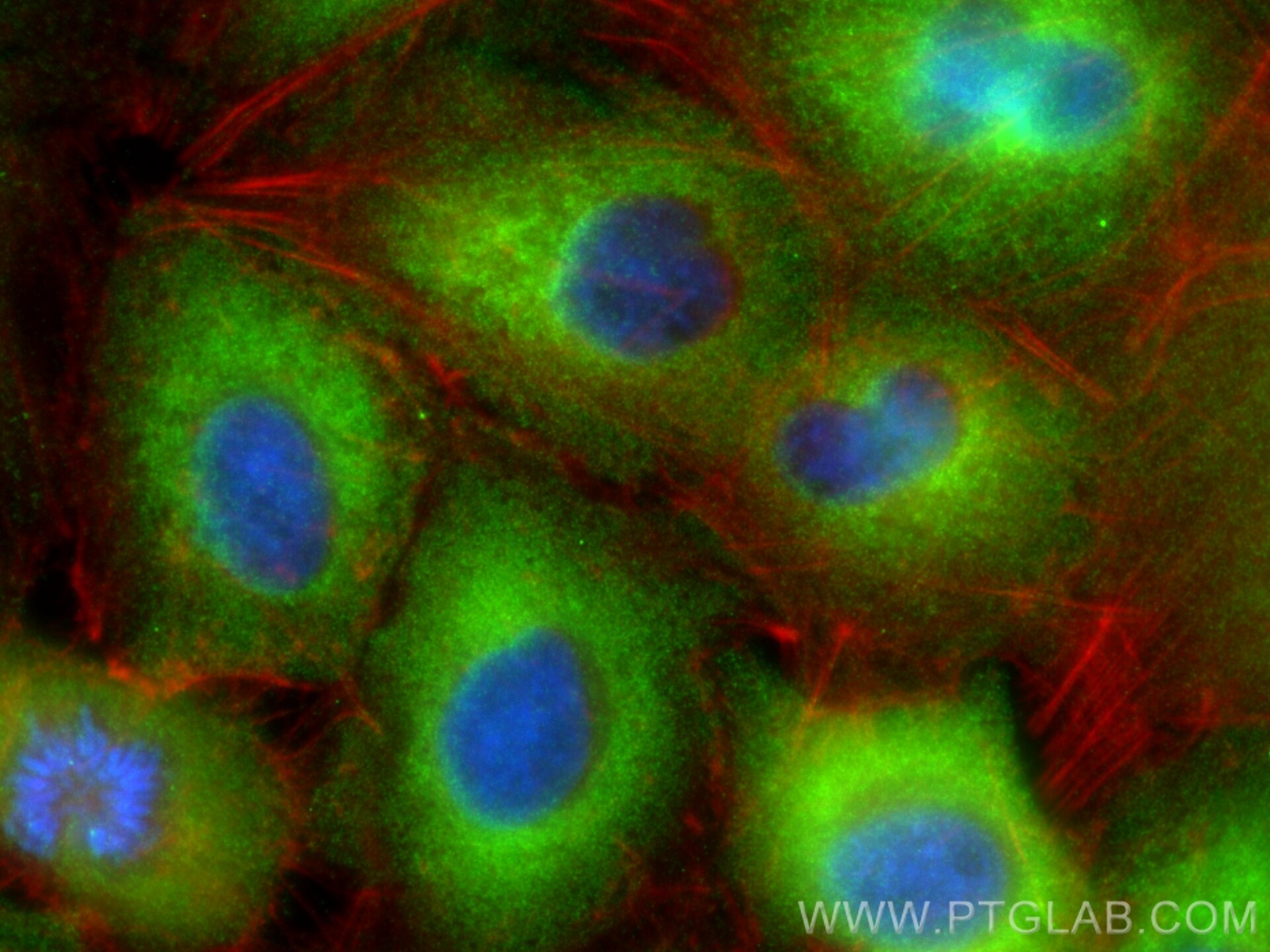Tested Applications
| Positive WB detected in | PC-3 cells, A549 cells, mouse heart tissue |
| Positive IHC detected in | human liver tissue Note: suggested antigen retrieval with TE buffer pH 9.0; (*) Alternatively, antigen retrieval may be performed with citrate buffer pH 6.0 |
| Positive IF/ICC detected in | A549 cells |
Recommended dilution
| Application | Dilution |
|---|---|
| Western Blot (WB) | WB : 1:500-1:1000 |
| Immunohistochemistry (IHC) | IHC : 1:50-1:500 |
| Immunofluorescence (IF)/ICC | IF/ICC : 1:50-1:500 |
| It is recommended that this reagent should be titrated in each testing system to obtain optimal results. | |
| Sample-dependent, Check data in validation data gallery. | |
Product Information
25036-1-AP targets ABHD18 in WB, IHC, IF/ICC, ELISA applications and shows reactivity with human, mouse samples.
| Tested Reactivity | human, mouse |
| Host / Isotype | Rabbit / IgG |
| Class | Polyclonal |
| Type | Antibody |
| Immunogen |
CatNo: Ag19120 Product name: Recombinant human C4orf29 protein Source: e coli.-derived, PET28a Tag: 6*His Domain: 209-332 aa of BC128143 Sequence: TSEGLLLQDTSKMKRFNQTLSTNKSGYTSRNPQSYHLLSKEQSRNSLRKESLIFMKGVMDECTHVANFSVPVDPSLIIVVQAKEDAYIPRTGVRSLQEIWPGCEIRYLEGGHISAYLFKQGLFR Predict reactive species |
| Full Name | chromosome 4 open reading frame 29 |
| Calculated Molecular Weight | 414 aa, 47 kDa |
| Observed Molecular Weight | 60 kDa |
| GenBank Accession Number | BC128143 |
| Gene Symbol | C4orf29 |
| Gene ID (NCBI) | 80167 |
| RRID | AB_2879862 |
| Conjugate | Unconjugated |
| Form | Liquid |
| Purification Method | Antigen affinity purification |
| UNIPROT ID | Q0P651 |
| Storage Buffer | PBS with 0.02% sodium azide and 50% glycerol, pH 7.3. |
| Storage Conditions | Store at -20°C. Stable for one year after shipment. Aliquoting is unnecessary for -20oC storage. 20ul sizes contain 0.1% BSA. |
Background Information
ABHD18 (α/β hydrolase domain-containing protein 18) is a transmembrane protein in mammals whose function has not yet been fully elucidated. It belongs to the large α/β hydrolase superfamily, whose members typically possess hydrolase activity and are involved in a variety of metabolic reactions. The ABHD18 protein is localized on the lysosomal membrane and may participate in intracellular lipid metabolism or signal transduction processes. Recent studies have shown that ABHD18 is the key enzyme in human cells that catalyzes the deacylation of cardiolipin to MLCL. The loss of ABHD18 function can significantly alleviate mitochondrial supercomplex defects, energy metabolism disorders, and cardiomyopathy phenotypes caused by TAZ deficiency, even achieving a "genetic suppression" effect in mice and patient cells. This not only reveals ABHD18 as a core node in the cardiolipin remodeling pathway but also provides an entirely new therapeutic approach for mitochondrial diseases such as Barth syndrome.
Protocols
| Product Specific Protocols | |
|---|---|
| IF protocol for ABHD18 antibody 25036-1-AP | Download protocol |
| IHC protocol for ABHD18 antibody 25036-1-AP | Download protocol |
| WB protocol for ABHD18 antibody 25036-1-AP | Download protocol |
| Standard Protocols | |
|---|---|
| Click here to view our Standard Protocols |

